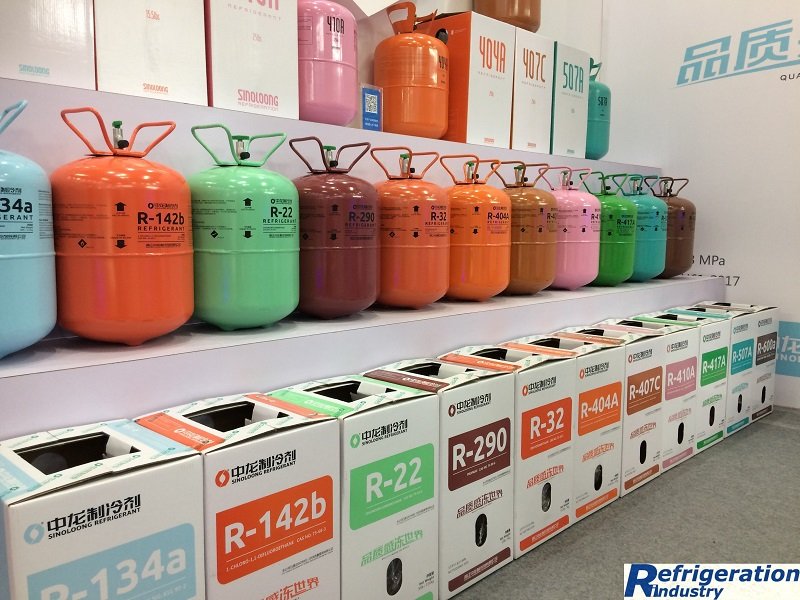Coolants - a substance through which the heat from the cooled objects transferred to the refrigerant.

Basic requirements for the coolants:
Virtually no such coolants that would fully satisfy the requirements. The most affordable coolant - water. But as the freezing temperature is high (0° C), then the water is used only in air conditioning systems and processes at positive temperatures. At negative temperatures commonly used aqueous solutions of salts NaCl, CaCl2 and MgCl2 - pickles. Thermophysical properties brines, including freezing temperature depends on the concentration of salt in solution. In all there are so-called brine or kriogidratnaya eutectic concentration, wherein the solution has a very low freezing point. With further increase of the salt concentration the freezing temperature of the solution increases. When cooled solutions (at any concentration) to a temperature lying below the curve leads to precipitation or ice or salt that alters the concentration of brine. Upon further cooling the solution reaches a state in kriogidratnoy point at which it is completely frozen.
Parameters kriogidratnyh points:
for NaCl - Tc = -21,2 ° C; = 28.9%; for MgCl2 - Tc = -33,6 ° C; ^ k = 27.6%; for CaCl2 - Tc = -55 ° C; = 42.55%.
The most widely circulated as a coolant solution of CaCl2. It also has the most highly corrosive. A necessary condition for the occurrence of corrosion is the presence of oxygen. In open systems, the brine is saturated with oxygen is approximately 4 times greater than in the closed, whereby corrosion is much stronger in them.
With the lowest rate of corrosion occurs in solutions which support the slightly alkaline reaction (pH 7,5-8,5), which is accomplished by adding a certain amount of caustic soda and milk of lime. The most effective means is to add passivating agents into brine: sodium silicate, sodium dichromate, phosphoric acid. In a closed brine system by using carefully purified salt corrosion is minimal.
In brines sometimes added macromolecular compounds (polyox or polyacrylamide - polymers of linear structure) in amounts 0,3-0,07%. These compounds contribute to the reduction of friction losses, increase productivity pumps and pipeline capacity.
Recently, more and more often as refrigerants used aqueous solutions of glycols. Aqueous solutions of ethylene glycol and propylene glycol, and alcohols called antifreeze. They have a lower freezing temperature, less aggressive to the materials of construction, but most of the cost.